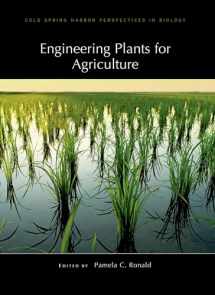
Engineering Plants for Agriculture (Perspectives CSHL)
Book details
Summary
Description
Agriculture plays a vital role supporting human life on Earth but faces significant challenges because of population growth, plant pathogens, and climate change. Genetic engineering of crops promises to increase food yields, create drought- and pest-resistant crops, and improve nutrition in the developing world.
Written and edited by experts in the field, this collection from Cold Spring Harbor Perspectives in Biology examines the molecular bases of different plant characteristics and how they can be manipulated genetically using modern molecular biological techniques. The contributors review recent advances in our understanding of plant plasticity, circadian rhythms, stomatal development, inflorescence architecture, symbiotic phosphate acquisition, and specialized plant metabolism and discuss how this knowledge might be used to boost yields, improve tolerance to pathogens and environmental stress, and enhance nutritional content. Several chapters are devoted to the development of specific genetically modified plants (e.g., disease-resistant cassava and submergence-tolerant rice) and their agronomic and socioeconomic impacts.
The generation of blight-resistant American chestnut trees--the first bioengineered plants developed with the goal of ecological restoration--is also described. This volume is therefore an essential read for all plant biologists, geneticists, and engineers interested in addressing agricultural as well as environmental challenges.


We would LOVE it if you could help us and other readers by reviewing the book
Book review



